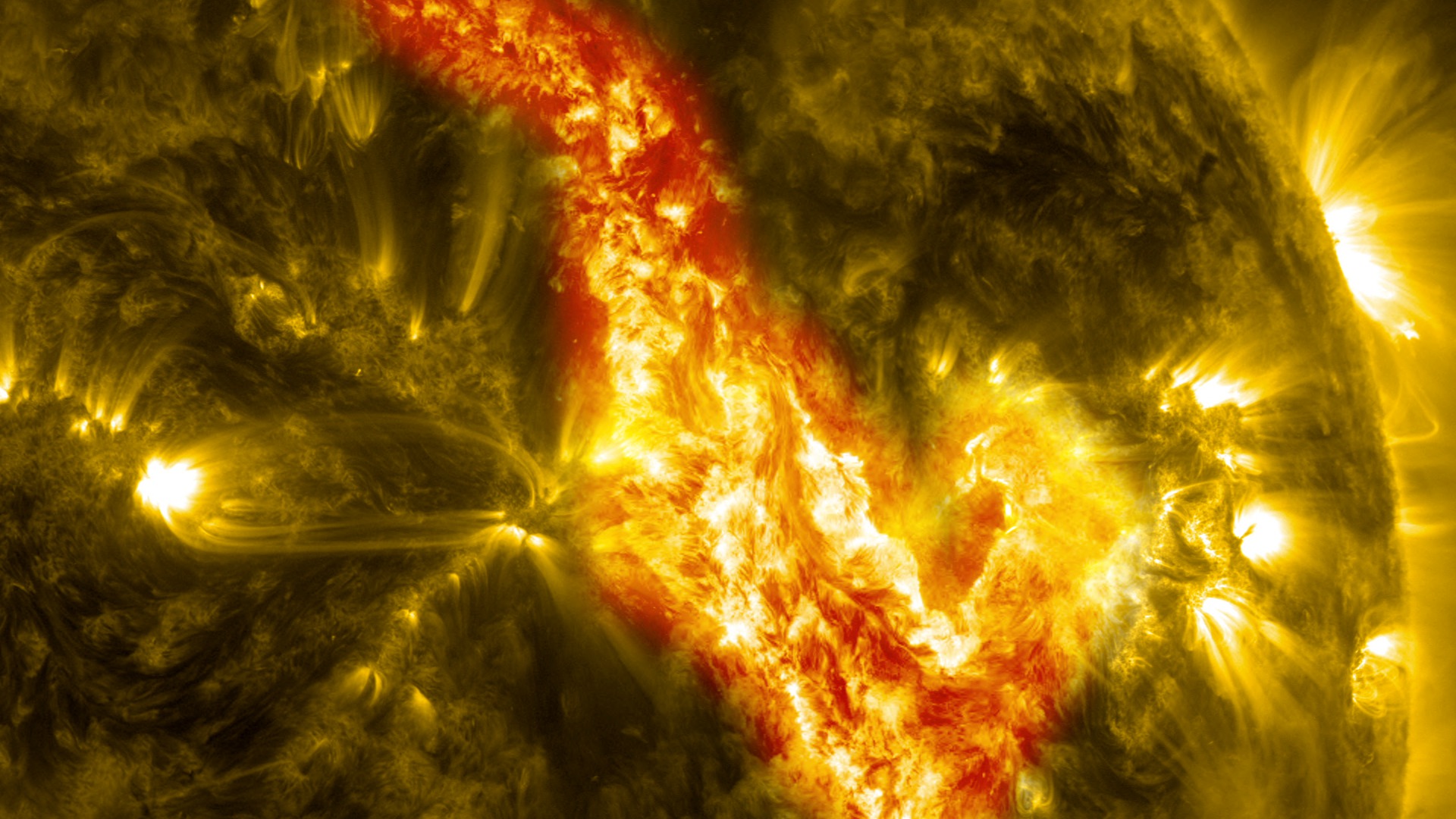Canyon Of Fire
In September 2013, a 200,000-mile-long loop of solar material erupted in the sun's atmosphere leaving behind what looks like a canyon of fire. These giant loops, called filaments, consist of charged particles held in place by magnetic fields that extend out from the sun’s surface. On September 29-30, NASA’s Solar Dynamics Observatory spacecraft watched as a filament about 25 times the Earth’s width expanded and then collapsed just north of the sun’s equator. Moments later, it saw a glowing canyon trace the channel where magnetic fields held the structure aloft. Watch the video to see the event unfold.

A NASA spacecraft views a solar eruption and its aftermath.
In this video, the event is replayed in three distinct wavelengths to highlight different aspects of the eruption.

The glowing canyon is most easily seen in this image, which shows material at temperatures of 1,800,000°F.

Charged particles coursing along magnetic field lines are seen in this image, which shows material at temperatures of 1,000,000°F.

This image shows relatively cooler material on the sun at temperatures of 90,000°F.
For More Information
See NASA.gov
Credits
Please give credit for this item to:
NASA's Goddard Space Flight Center
-
Animator
- Tom Bridgman (Global Science and Technology, Inc.)
-
Video editor
- Scott Wiessinger (USRA)
-
Producer
- Scott Wiessinger (USRA)
-
Scientist
- C. Alex Young (NASA/GSFC)
-
Writer
- Karen Fox (ADNET Systems, Inc.)
Release date
This page was originally published on Thursday, December 12, 2013.
This page was last updated on Wednesday, May 3, 2023 at 1:51 PM EDT.
